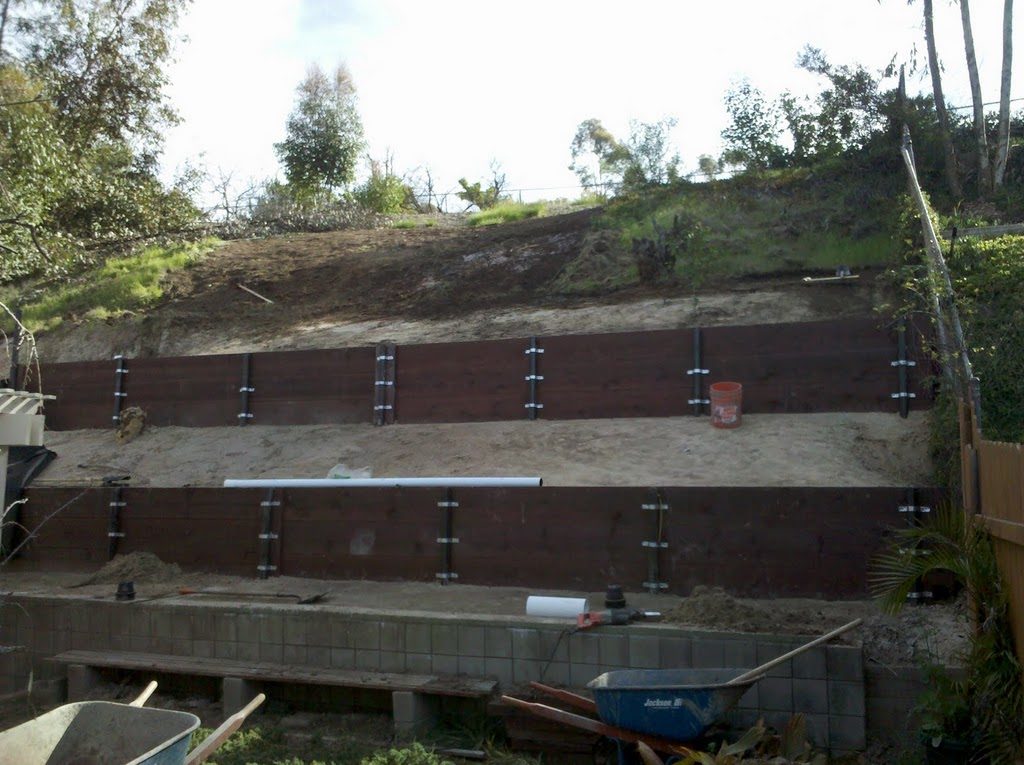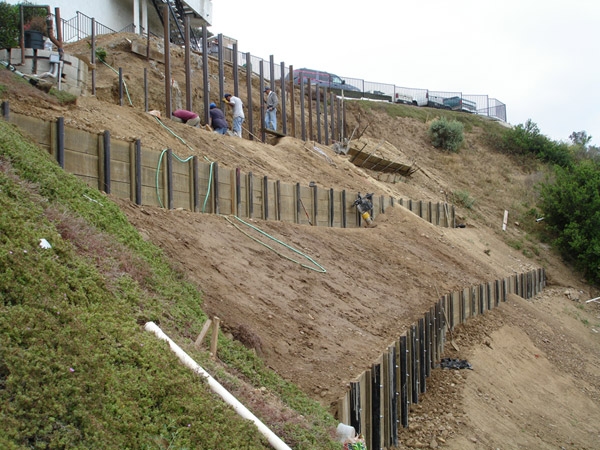
Landslides, otherwise known as “slope destabilization,” is the shifting of land mass.
Usually, landslides are triggered by either human interference such as soil erosion, construction or traffic, or by natural causes such as hurricanes, earthquakes, snow melt, deforestation and over-cultivation. Landslides can either be localized or affect a broad area and qualify as a natural disaster. Luckily, landslide damage is preventable! The critical component is ensuring you’re proactive!
Landslide Protection
One of the most common preventative measures you can take to protect your property is to have a retaining wall installed. If you already have a retaining wall, don’t stop reading yet! Many older retaining walls have drainage issues which can cause weight and pressure to build up and overflow. Furthermore, retaining walls are not just for looks. Sure, they can be designed to flow well with your current landscaping, however, their primary purpose is to keep soil from shifting.
There are simple things you can do yourself. For instance, one quick and effective solution to prevent landslides is to stabilize sloped landscapes with vegetation. Typically, this prevention method works best on slopes which are moderately sloped and not too steep (or if the movement hasn’t started yet.) However, in general, retaining walls require careful planning. It’s important to have a professional assess your property and determine what type of retaining wall would be most beneficial. The good news is, if installed correctly, your retaining wall will support soil retention and keep your home protected from landslide triggers.
Some commonly used retaining wall types include:
Concrete retaining walls: Concrete blocks are locked together and don’t require any mortar to bond them. The soil behind it must be tightly packed to maintain a solid hold. Loose soil allows in moisture, which can cause weakening and collapse. Concrete retaining walls easily form curves which is typically a requirement of this stabilization approach.
Steel Beam Walls: These are often used on extreme slopes where a concrete wall is too expensive. The steel beams are usually placed in a pre-drilled hole and encased in concrete.
Piling walls: These retaining walls are made of steel and are used in tight spaces. Typically, the majority of the wall sits below the soil’s surface and works best with landscaping that has soft soil/sediment.
Gravity walls: Because of this wall-type’s size, pressure is resisted with the pressure behind its own mass.
Cantilever walls: This type of retaining wall leverages a large, structural foundation and uses horizontal pressure from behind the wall to create vertical pressure on the ground below.
Anchored walls: Resistance for this retaining wall uses cables or other anchor points to secure the wall within the rock or soil behind to increase resistance.
GeoGrid systems: GeoGrid textile fabric is often used to rebuild slopes that have previously failed due to a landslide or mudslide. Generally, this is often the most cost effective approach.


Landslide Prevention Tips
- Keep an eye out for property changes. Often, before a landslide occurs there are warning signs. Take notice of:
- Shifts in your landscaping (e.g. patterns of storm-water drainage, land movement, slides, or leaning fences or trees)
- Doors or windows which have begun to stick
- New cracks in foundations or structural elements (plaster, tile, brick)
- Gaps between outside walls, walks, or stairs and the building
- Widening cracks in driveways or sidewalks
- Bulging ground area near hills or slopes
- Water breaking through in strange areas
Avoid collective yard waste: Leaves, landscaping materials, loose gravel should not be left on any sloped parts of your property. This can lead to improper drainage and degradation which can ultimately increase your risk of landslide.
Minimize run-off: Avoid increasing water-off to hilly or sloped areas such as hosing off vehicles or routine watering. If you notice increased water drainage, make sure to address this immediately.
Plan installations carefully: Thinking about adding an irrigation system, pool or other water source? Before you break ground, it’s critical all sloped areas of your land/property are protected from unnecessary increases in moisture.

About Unilited Drilling
Unlimited Drilling & Foundations Inc. was founded in 1993. Over the past 28 years, the company has completed thousands of foundation repair, slope stabilization and drainage systems projects in Southern California. They specialize in all aspects of foundation repair, slope stabilization and retaining walls.

